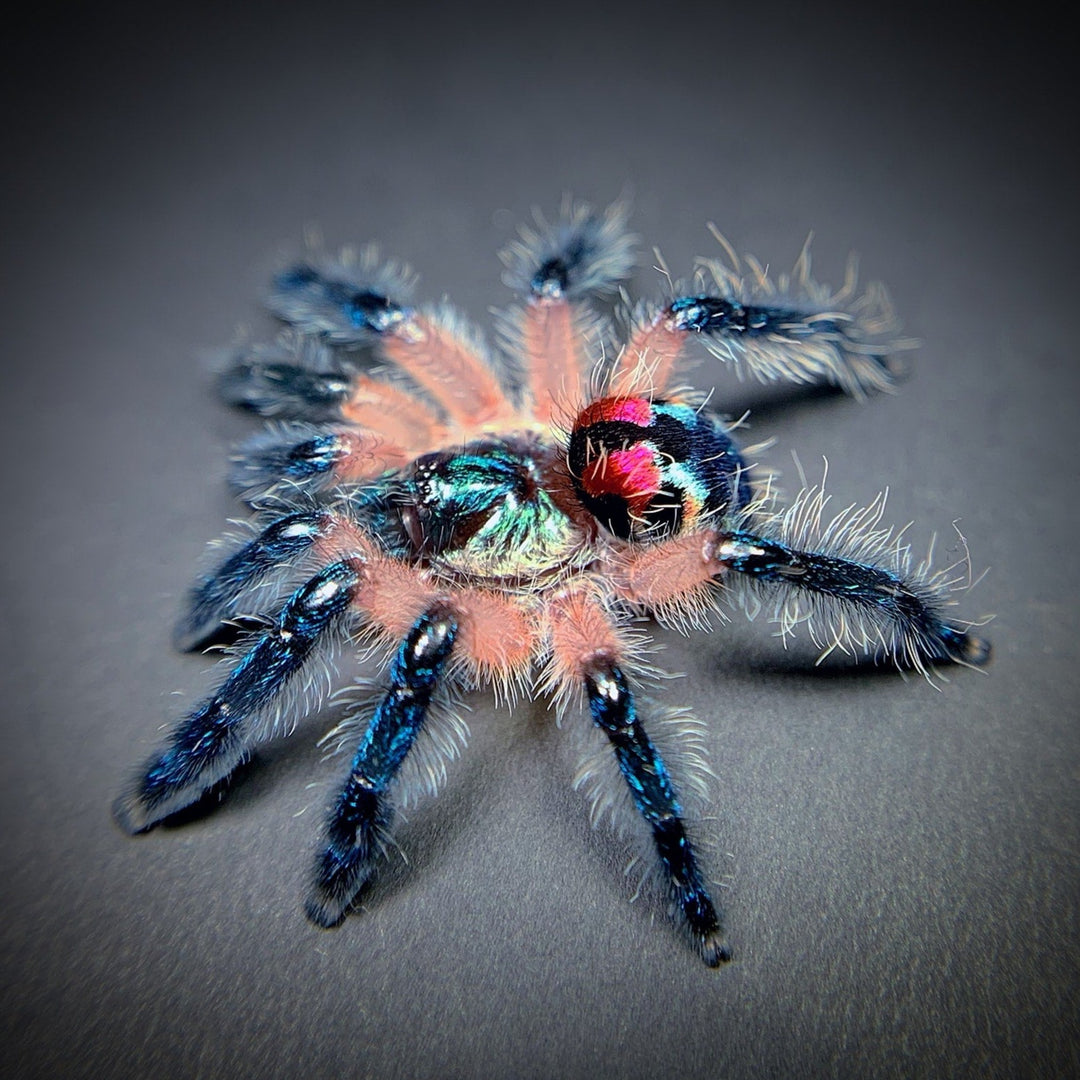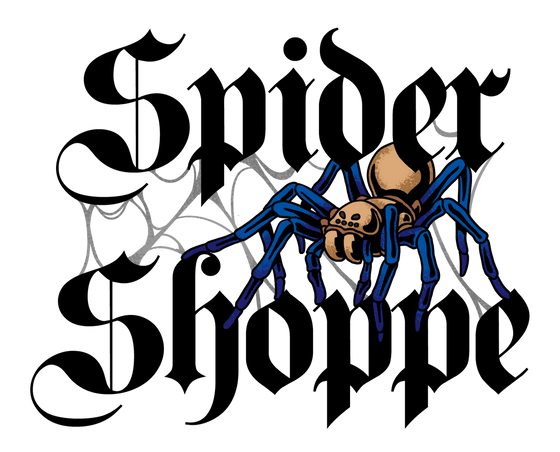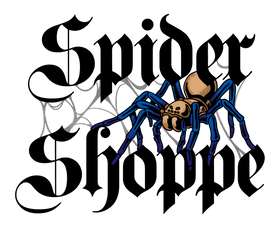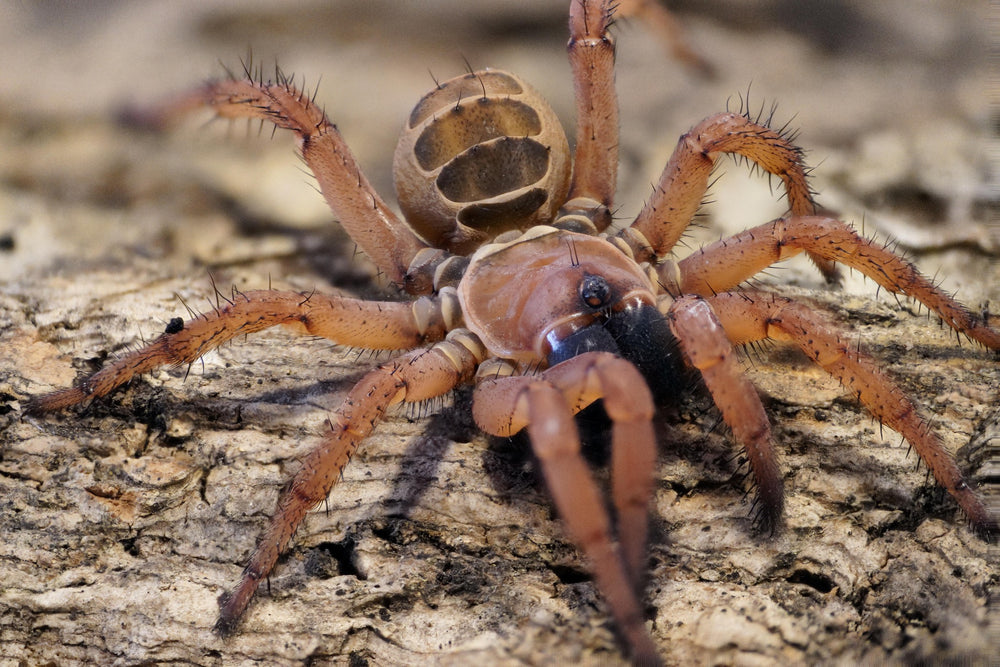
Typhochlaena seladonia (Brazilian Jewel Trapdoor) 0.25"
- Live Arrival Guarantee
- Live Animals Ship FedEx Priority Overnight (Mon-Weds)
- In stock, ready to ship
- Inventory on the way
The Brazilian Jewel Tarantula, Typhochlaena seladonia Koch is an arboreal trapdoor building tarantula with almost holographic coloration, thanks to their setae sporting luminously vivid metallic structural colors of sky blue, yellow, orange, and pink contrasted by a black chevron. This species resides in the last remaining remnants of lowland, old-growth Atlantic rainforests along the eastern coast of Brazil. These spiders have a particular affinity for residing on the Wild Cashew Tree, Curatella americana, an allergy-causing (urushiol-producing) member of the mango and poison ivy family Anacardiaceae. T. seladonia construct their burrows in small depressions or holes in peat deposits toward the base or top of trees, concealing their hides with a trapdoor constructed of fine-grained humus and/or clay and moss.
This species is a compacted, squat member of the New World pinktoe subfamily Aviculariinae, attaining a diagonal leg span of only 1.5-2.5". As one of the few trapdoor-building tarantulas [and at that, arboreal trapdoor spiders!], the body plan of T. seladonia parallels many genera of squat-bodied fossorial trapdoor-building mygalomorph lineages. An unusual morphological feature of the Typhochlaena spp. is that the abdomen in females and larger juveniles extends anteriorly (forward) above the carapace, giving this species a body shape oddly reminiscent of gravid common orb-weaving garden spiders.
These spiders must be able to construct trapdoors in captivity, requiring ample surface area suitable for building their hides. T. seladonia can be housed in vertical enclosures with ample cross-ventilation and vertically-positioned cork slabs in which holes of various diameters are drilled and plugged with trapdoor-building substrate. For added trapdoor burrow site selection, the substrate can be plugged and molded into crevices between and behind cork bark slabs. Holes or depressions can be molded in some parts of the substrate to encourage a burrowing site.
The substrate composition for constructing trapdoors for T. seladonia is critical– the mix needs to be porous– well enough aerated for the spider’s plugged burrow to get enough gas exchange. Additionally, the substrate must adhere enough to maintain its structure so the burrow walls do not cave in and trap the spider during construction. The way to achieve these properties is by mixing substrate components of different grain sizes. For example, a small portion of sandy clay can provide adherence when added to a mix composed primarily of fluffy organic potting mix rich in wood pulp, chopped or milled long-fiber Sphagnum moss, shredded oak leaf litter, and fine perlite can all be mixed to provide excellent moisture retention and air circulation. Enclosures should be misted periodically to ensure adequate substrate moisture and humidity.
As a trapdoor hunter, T. seladonia is rarely (if ever) visible outside its enclosed burrow. These are not spiders that will be out on display. The trapdoor can be gently opened with forceps periodically to briefly check on tarantulas after a molt and gauge when to feed based on abdominal thickness.
As members of the subfamily Aviculariinae, T. seladonia requires ample cross ventilation and air circulation yet elevated humidity to thrive at all stages of life. Given their highly specialized ecology and sensitivity, Brazilan Jewel is a tarantula most suited to those with experience working with sensitive spiderlings of Avicularia spp. If you are an attentive arachnoculturist and prepared for a challenge, T. seladonia is among the most unique and stunningly colored tarantulas on the planet and definitely worth the effort!

Info on our shipping policy can be found on our T&C page.



